How many unique 1H & 13C NMR signals exist in the spectrum of the following compounds?

Concepts and reason
This problem is based on the concept of NMR spectroscopy.
NMR spectroscopy is a very good tool to analyze organic compounds. 1H NMR signal indicates number of ‘different sets’ of protons present in the molecule. 13C NMR indicates number of ‘different sets’ of carbon atom present in the molecule.
Fundamentals
A set of protons with the same magnetic environment are called equivalent protons and give only one signal in the 1H NMR spectrum. Therefore, number of sets of protons reveal how many signals appear in the spectrum.
Similarly, a set of carbon atoms with the same magnetic environment are called equivalent carbons and give only one signal in the 13C NMR spectrum. Therefore, number of sets of carbon atoms reveal how many signals appear in the spectrum.
Answer:
Part 1.a
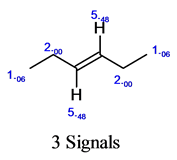
Number of 1H NMR signals is 3.
Part 1.b

Number of 1H NMR signals is 3.
Part 1.c
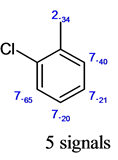
Number of 1H NMR signals is 5.
Part 1.d

Number of 1H NMR signals is 3.
Part 2.a

Number of 13C NMR signals is 4.
Part 2.b
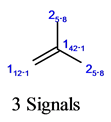
Number of 13C NMR signals is 3.
Part 2.c
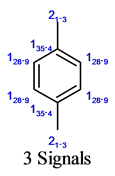
Number of 13C NMR signals is 3.
Part 2.d
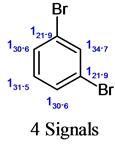
Number of 13C NMR signals is 4.
Part 2.e

Number of 13C NMR signals is 3.
Part 2.f

Number of 13C NMR signals is 3.